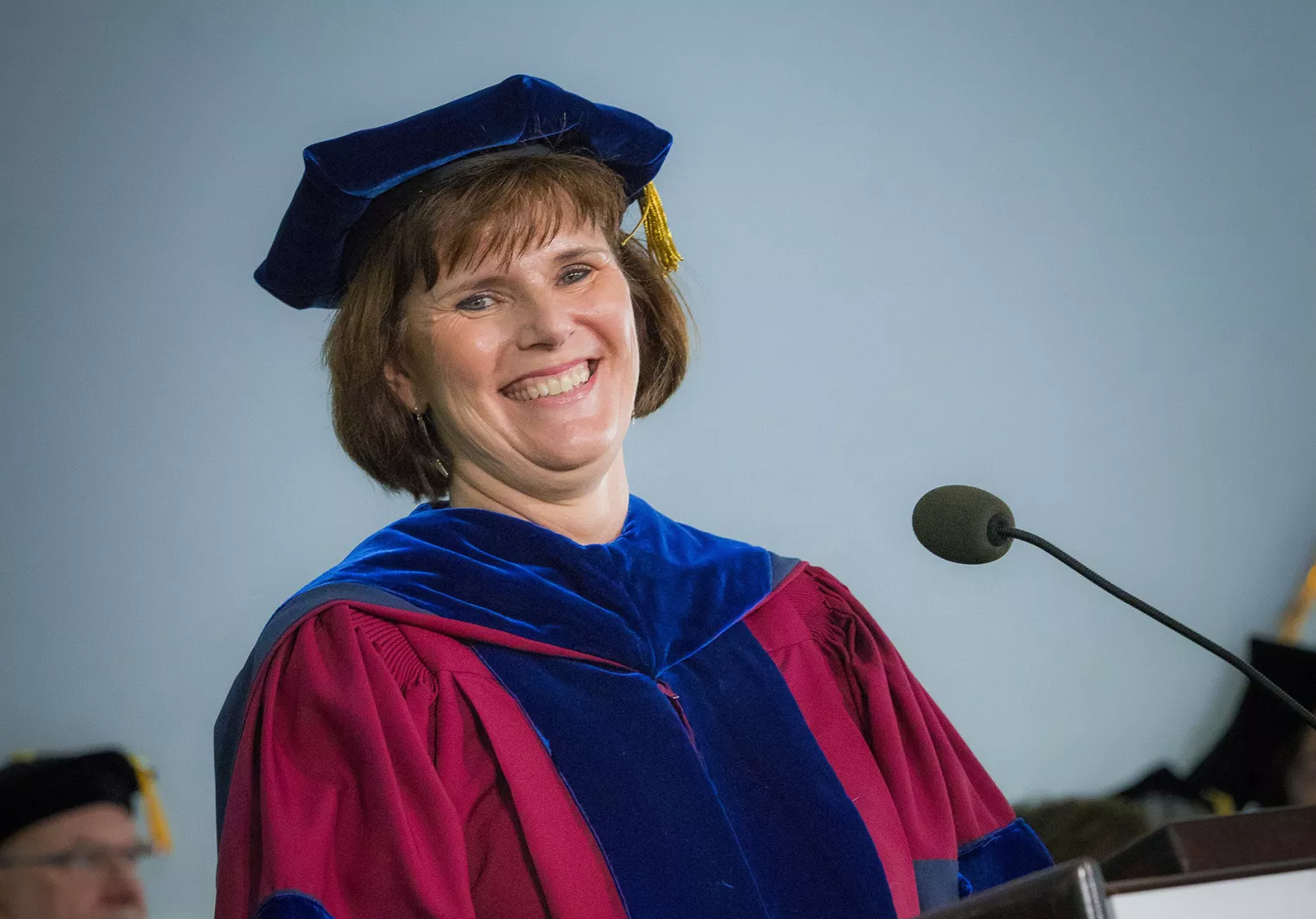
Celebrating Kim Cassidy
As former president of Bryn Mawr College, Kimberly Wright Cassidy's leadership has changed lives and shaped us as individuals, as a community, and as an institution.
VIDEO 5:46 - In honor of our 9th president, Kim Cassidy, nine members of the Bryn Mawr College community (plus one other college president) share their thoughts about the far-reaching impact of the Cassidy presidency.
Since taking office officially in 2014, plus one year as interim president before that, Former President Cassidy has partnered with the community to achieve great things: she led the largest fund-raising campaign in the College’s history, leading to unprecedented growth in the financial aid budget, the construction of new and renovated campus buildings supporting academics and student life as well as increased staff in both areas, the development of a 21st-century curriculum, and shepherded the College as it reckoned with its legacies of racism and exclusion. Kim Cassidy steps down as Bryn Mawr’s president in June 2024 and will return to teaching and research full-time within our Psychology Department, where she has been since 1993.
A Lifetime Commitment
"As I return to the faculty, I’m excited to witness the transformative impact the Bryn Mawr community will undoubtedly continue to make, both on our campus and beyond."

Accomplishments Timeline
Supporting Faculty and Curriculum
During Cassidy's presidency, the College has hired 108 tenure-track and continuing non-tenure-track faculty members. It created new majors in environmental studies, international studies, biochemistry and molecular biology, and neuroscience, as well as new minors in health studies, museum studies, and data science. Both education and creative writing transitioned from being minors to majors, and the innovative 360° program has continued to challenge faculty and students to examine topics in exciting new ways.
Expanding Access
Beginning with the fall 2023 semester, Bryn Mawr eliminated student loans for students with family incomes below $110,000 and replaced these loans with institutional grants.